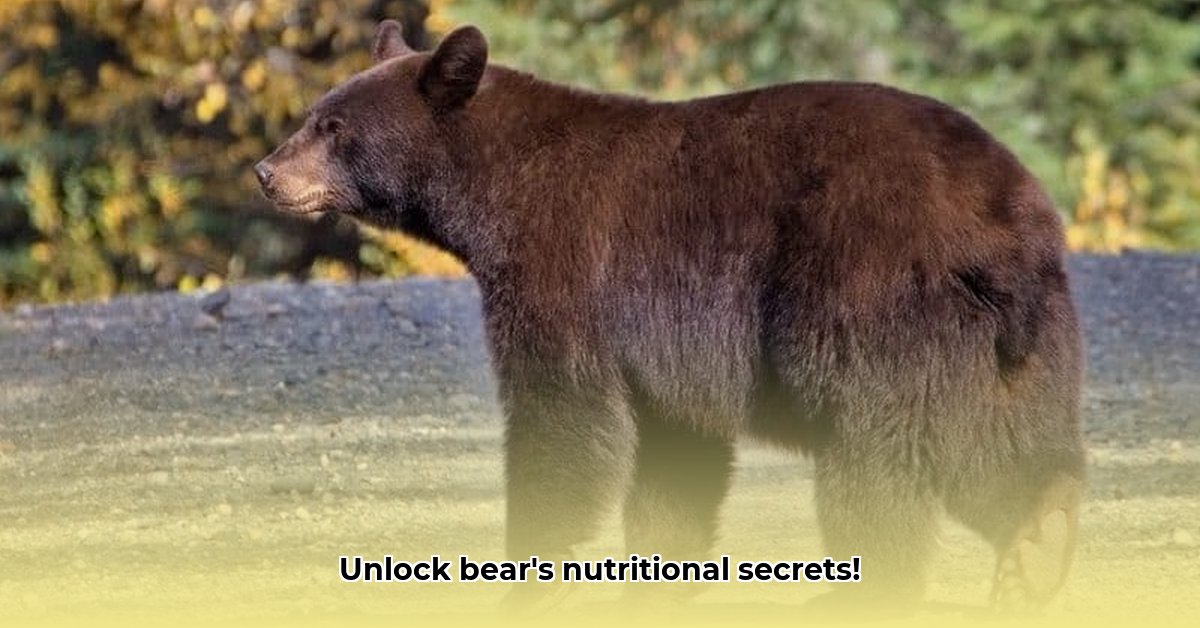
Eish, so you're keen to try bear meat? It's packed with protein, ja, but it's not your average biltong. This guide will help you understand the good, the bad, and most importantly, how to cook it safely. We'll cover the nutritional value, compare it to other meats, and show you exactly how to prep and cook it without any nasty surprises. Safety first, right?
Bear Meat Nutrition: A Closer Look
Bear meat is a unique food source with both upsides and downsides. Let's unpack it.
Nutritional Profile: The Good Stuff
Bear meat boasts a high protein content – around 20 grams per 100 grams – similar to lean beef. It's also a good source of iron, important for energy levels and blood health. Many find the flavour interesting, often comparing it to venison or a richer beef.
Health Risks: The Not-So-Good Stuff
The biggest concern is Trichinella, a parasite that can cause trichinosis (a nasty illness with symptoms like muscle aches, fever, and fatigue). Proper cooking is vital to eliminate this.
Sourcing and Ethical Considerations: Doing the Right Thing
Responsible sourcing is crucial. This means ethical hunting practices, adhering to local regulations, and considering the environmental impact. If you're not a hunter, make sure you source bear meat from a reputable and legal supplier.
Safe Preparation and Cooking: A Step-by-Step Guide
This is where things get serious. Follow these steps carefully:
- Sourcing: Confirm the meat's origin is reputable and legal. Check local regulations.
- Deep Freeze: Freeze the meat solid at -20°C (-4°F) for at least three weeks. This significantly reduces Trichinella risk.
- Meticulous Cleaning: Thoroughly clean and trim the meat, removing visible fat and connective tissue. This improves taste and removes potential parasite hotspots.
- Cook to Perfection (and Safety): Cook to an internal temperature of at least 71°C (160°F) using a reliable meat thermometer. Undercooked bear meat is a health hazard.
- Safe Storage: Refrigerate cooked meat promptly and consume within a few days.
Frequently Asked Questions (FAQs)
Q: Is bear meat safe? A: Yes, if sourced responsibly, handled correctly, and cooked thoroughly. The "if" is crucial.
Q: What does it taste like? A: It's often described as similar to beef or venison, though the taste depends on the bear's diet and preparation. Expect a gamey flavour.
Q: How best to cook it? A: Roasting, grilling, and stewing work well, ensuring even cooking to the safe internal temperature.
Weighing the Pros and Cons: A Balanced View
Here’s a quick summary:
| Pros | Cons |
|---|---|
| High protein | Risk of trichinosis if improperly prepared |
| Good iron source | Limited availability |
| Potentially lower fat than beef | Ethical hunting considerations; environmental impact |
| Unique flavour | Requires careful preparation; not for beginner cooks |
Bear meat presents interesting nutritional possibilities, but safety must be your top priority. By following these guidelines, you can minimise risks and enjoy a potentially delicious—but delicate—meal. Remember, ongoing research continues to improve our understanding of bear nutrition and food safety; stay informed.
Minimising Parasite Risk: A Deeper Dive
Bear meat is a delicious treat, but the threat of Trichinella spiralis necessitates careful handling. Let's explore this further.
Understanding Trichinella spiralis
This parasite can live in bear muscle. Eating undercooked infected meat causes trichinosis; symptoms can range from mild discomfort to severe illness.
Freezing and Cooking: A Two-Pronged Approach
Freezing at -18°C (0°F) for at least three weeks kills Trichinella larvae. However, even after freezing, cooking to 74°C (165°F) for at least 3 minutes is vital. Use a meat thermometer for accuracy.
Ethical Sourcing: Respecting Wildlife
Sustainable hunting is key. Ensure your bear meat comes from a legitimate source, adhering to all regulations. Respecting wildlife and hunting responsibly is crucial.